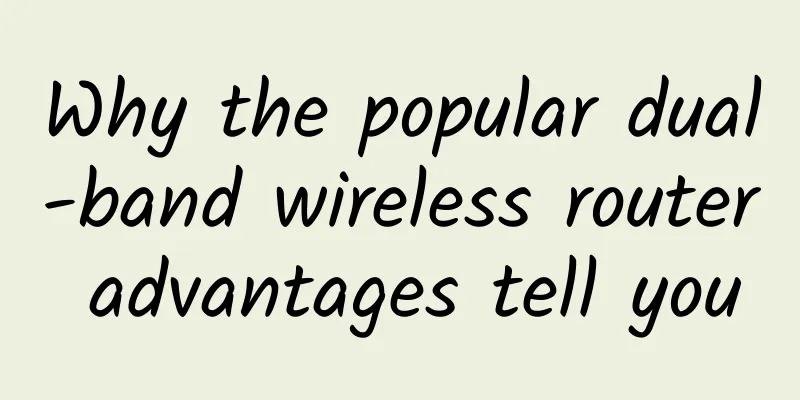Why the popular dual-band wireless router advantages tell you

|
Open the e-commerce website, dual-band wireless routers using 2.4GHz and 5GHz frequency bands are becoming more and more popular. What is the extra 5GHz frequency band? What are the benefits? Now, the wireless networks used by most of our users are running in the 2.4GHz frequency band. At the same time, wireless keyboards and mice, wireless headphones, Bluetooth devices, etc. are also running in the 2.4GHz frequency band, which also makes this frequency band very crowded. Therefore, when using a wireless router working in the 2.4GHz frequency band, we will often find that there are problems such as poor wireless signals, network freezes, and frequent disconnections. Among the many interference sources, microwave ovens are undoubtedly the appliances that interfere with wireless signals the most. In the daily use of wireless networks, we should try to avoid microwave ovens and cordless phones.
2.4GHz wireless technology is a short-range wireless transmission technology, and it is a wireless frequency band that is open to public use worldwide. And there is no restriction on the use of this frequency band, and all kinds of wireless products in the world can use this frequency band. It is precisely because of this feature that most wireless products such as wireless routers currently work on this frequency band. Its overall bandwidth is better than other wireless frequency bands, which improves the overall data transmission rate, and its transmission distance is longer. With the development of technology, various manufacturers can make 2.4GHz wireless products more compact and reduce power consumption. Speaking of interference, the wireless network, the information highway, has become overcrowded. There are only three non-interfering channels in the 2.4GHz band, and the "traffic jam" is very serious, which is a headache. In the 5GHz band, there are 22 non-interfering channels, which greatly exceeds the number of non-interfering channels in 2.4GHz. It is like a highway with only three lanes and a highway with 22 lanes. It is self-evident which one is more unobstructed. In addition, wireless keyboards and mice, wireless headphones, Bluetooth devices, etc. are running on the 2.4GHz highway, while the 5GHz band is less used, and radio interference is greatly reduced, which greatly improves the quality of the wireless network. 5GHz's fast transmission, less interference and noise, can give users a more advanced network experience. Dual-band combination, each doing its own job, has become the main application of 5GHz. Some basic network behaviors of users, such as sending and receiving emails, browsing the web, chatting, etc., can be carried out through the 2.4GHz frequency band; when playing online games or high-definition audio and video entertainment, it is best to switch to the 5GHz frequency band to obtain a refreshing actual experience. At present, whether it is iPhone, iPad or other flagship mobile devices, they can already support the 5GHz frequency band, thereby enhancing the user's network experience. |
<<: Why do you need to ask someone to deploy WiFi at home? You can do it yourself
>>: 8 predictions for the development of network technology in 2017
Recommend
Did you know? The 5G market started with B2B
The two major obstacles to the popularization of ...
OpLink: $3.50/month-AMD Ryzen/512MB/20GB NVMe/10Gbps ports
OpLink is a foreign hosting company founded in 19...
As containers become more widely used, how should we monitor them?
With the booming development and implementation o...
AkkoCloud: US CN2 GIA/Germany CN2 GIA/UK CN2 GIA line VPS annual payment starts from 299 yuan
AkkoCloud is a Chinese hosting company founded in...
IDC: Edge management services market expected to explode
As enterprises seek greater process efficiency an...
What kind of sparks will be created when the hottest blockchain meets the most popular sharing economy?
Where does the “mutual trust” of the sharing econ...
Network security knowledge: Understanding Voice over Internet Protocol (VoIP)
[[442039]] What is Voice over Internet Protocol (...
Global 5G users will reach 3.5 billion by 2026
Globally, more than 1 billion people, or 15% of t...
What is 5G IoT?
What is non-cellular 5G? I imagine most readers a...
Ministry of Industry and Information Technology: China's 5G investment reached 184.9 billion yuan in 2021
On January 25, China's Ministry of Industry a...
What does the increasingly popular 5G public network dedicated service mean?
[[426454]] This article is reprinted from the WeC...
Metaverse: What are the four pillars?
As a new paradigm of industrial Internet, the Met...
What exactly is the “network manager” that communications people talk about every day?
[[440862]] When it comes to "network adminis...
UDT, a high-speed data transmission protocol based on UDP
Introduction Simple is beautiful. In the world of...
How to cultivate talents needed for ecological collaboration? Huawei's talent ecosystem indicates that AI talents are the key training targets
[51CTO.com original article] On March 22, Huawei ...









